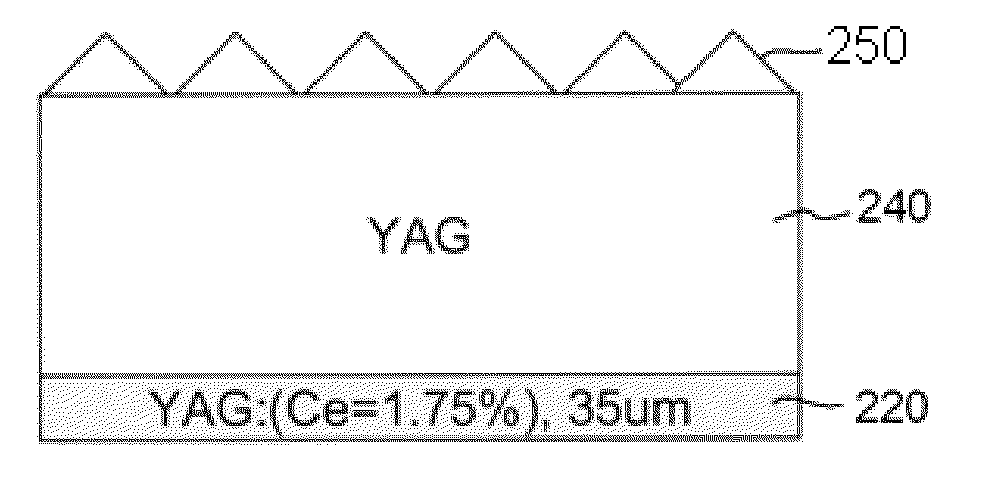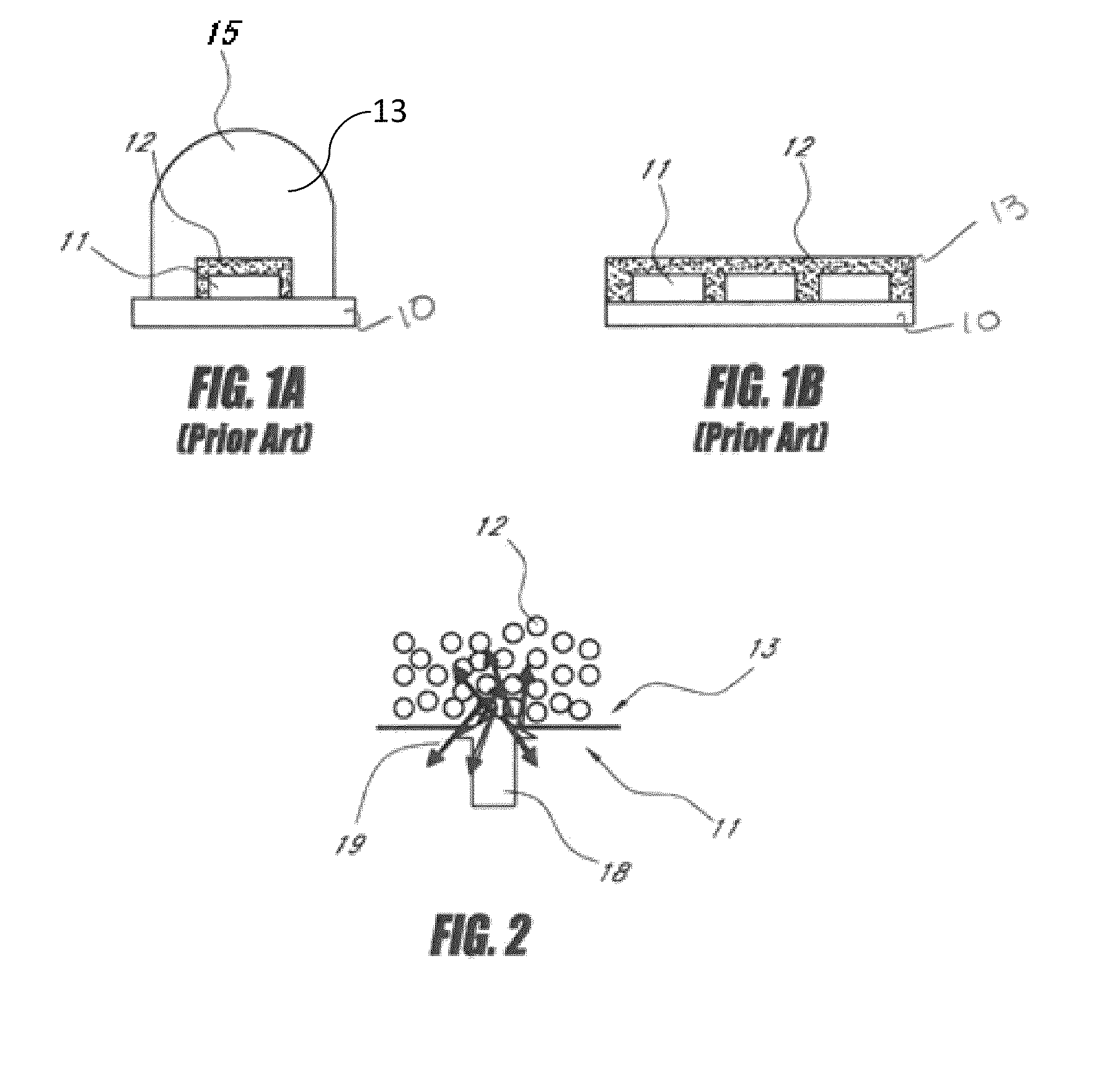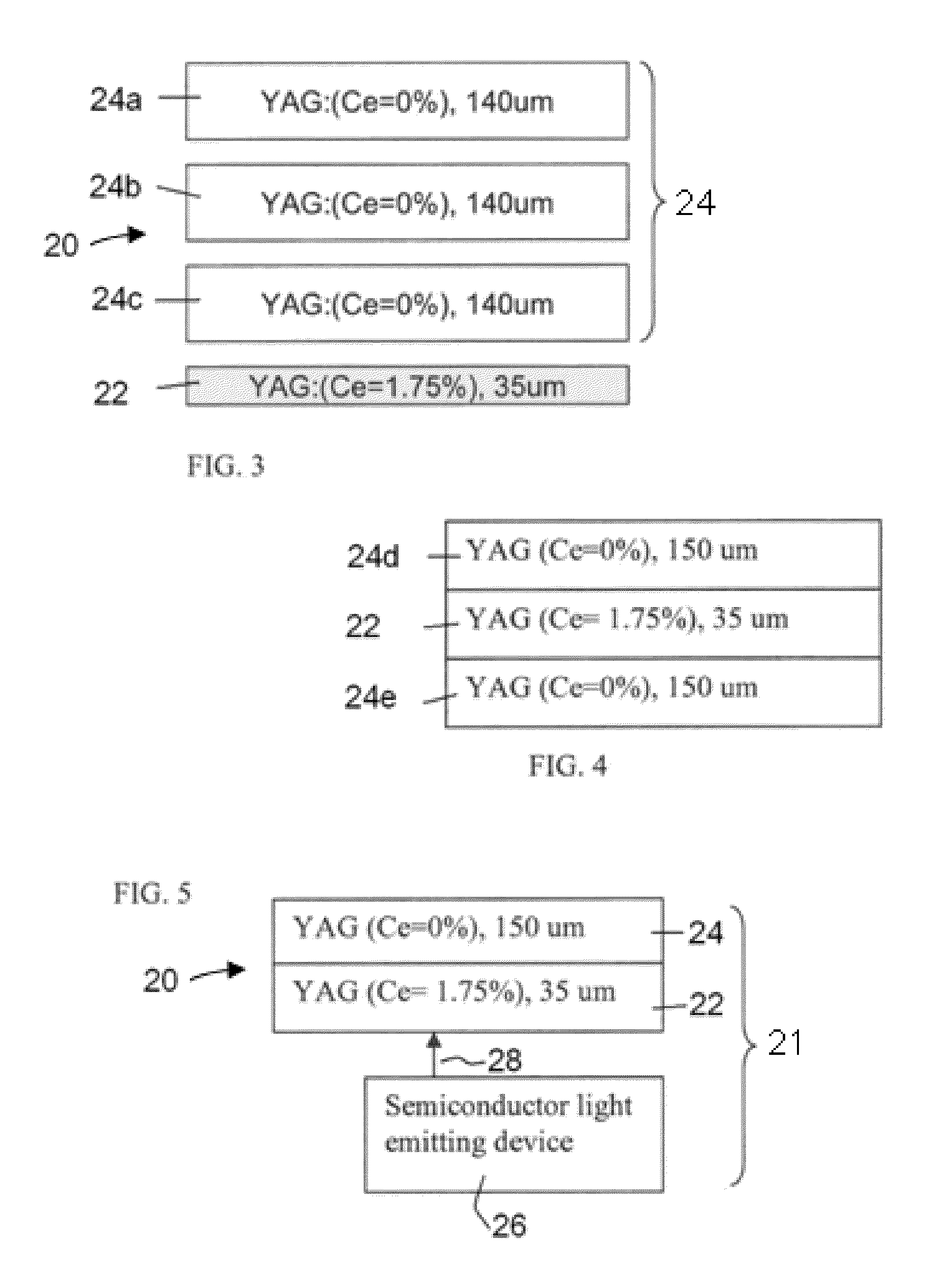Light emissive ceramic laminate and method of making same
a technology of light emissive ceramics and laminates, applied in the field ofluminescent layers, can solve the problems of poor resultant luminosity generated by these luminescent layers, low manufacturing cost, and generally high production cos
- Summary
- Abstract
- Description
- Claims
- Application Information
AI Technical Summary
Benefits of technology
Problems solved by technology
Method used
Image
Examples
examples
IQE Measurement and Comparison of Powders
[0104]The present invention will be explained in detail with reference to Examples which are not intended to limit the present invention.
1. Powder Synthesis
1.1 Plasma-Generated YAG:Ce Powder Synthesis
[0105]56.50 g of Yttrium (III) nitrate hexahydrate (99.9% pure, Sigma-Aldrich), 94.92 g of Aluminum nitrate nonahydrate (>98% pure, Sigma-Aldrich), and 1.14 g of Cerium (III) nitrate hexahydrate (99.99% pure, Sigma-Aldrich) were dissolved in deionized water, followed by ultrasonication for 30 min to prepare a substantially transparent solution.
[0106]This precursor solution of 2.0M concentration was carried into a plasma reaction chamber similar to that shown in patent publication WO2008 / 112710 via an atomization probe using a liquid pump. The principle, technique and scope taught in the patent publication WO2008 / 112710 is hereby incorporated by reference in its entirety.
[0107]The synthesis experiment was conducted with a RF induction plasma torch...
PUM
| Property | Measurement | Unit |
|---|---|---|
| thickness | aaaaa | aaaaa |
| particle size | aaaaa | aaaaa |
| particle size | aaaaa | aaaaa |
Abstract
Description
Claims
Application Information
 Login to View More
Login to View More - R&D
- Intellectual Property
- Life Sciences
- Materials
- Tech Scout
- Unparalleled Data Quality
- Higher Quality Content
- 60% Fewer Hallucinations
Browse by: Latest US Patents, China's latest patents, Technical Efficacy Thesaurus, Application Domain, Technology Topic, Popular Technical Reports.
© 2025 PatSnap. All rights reserved.Legal|Privacy policy|Modern Slavery Act Transparency Statement|Sitemap|About US| Contact US: help@patsnap.com



